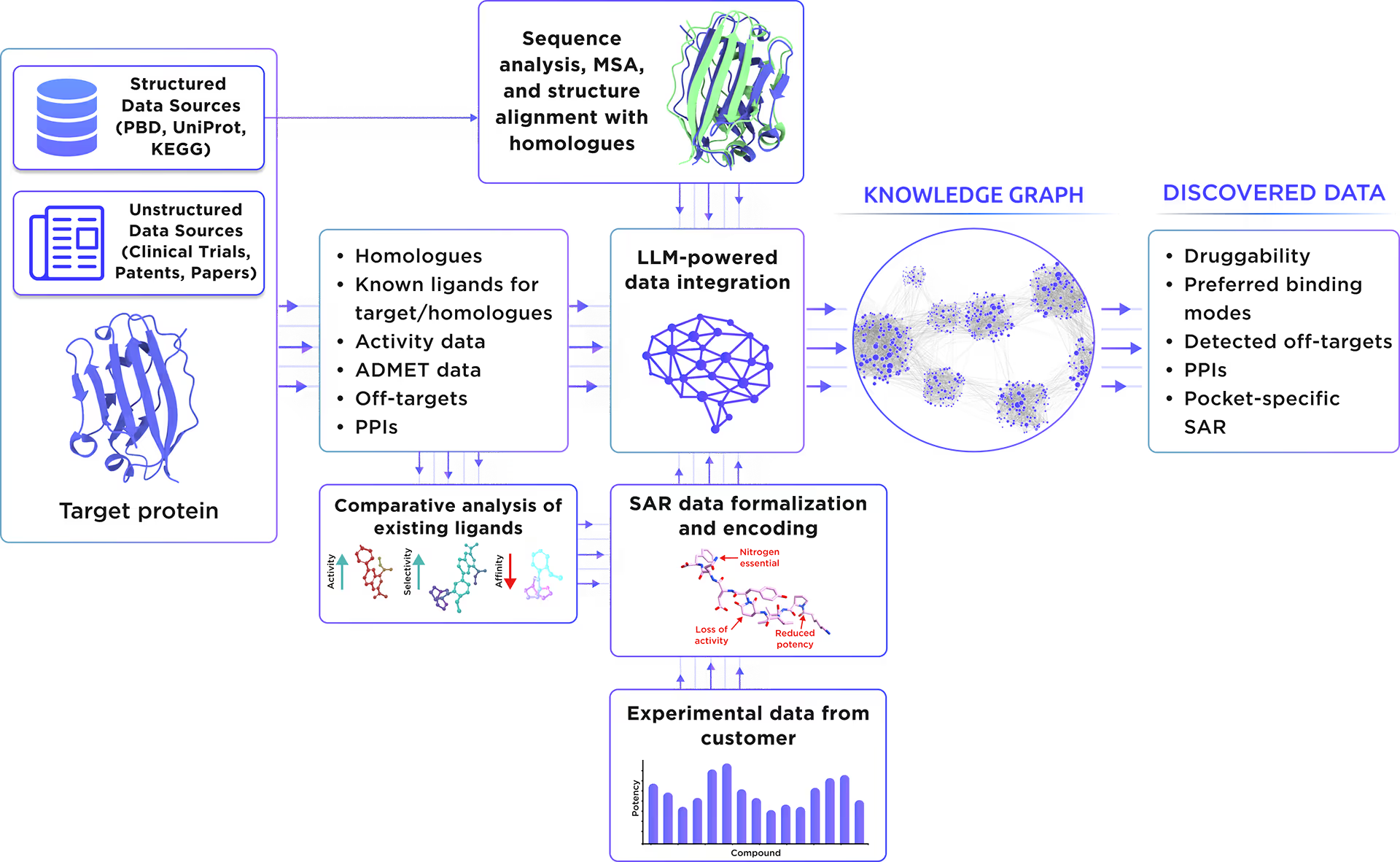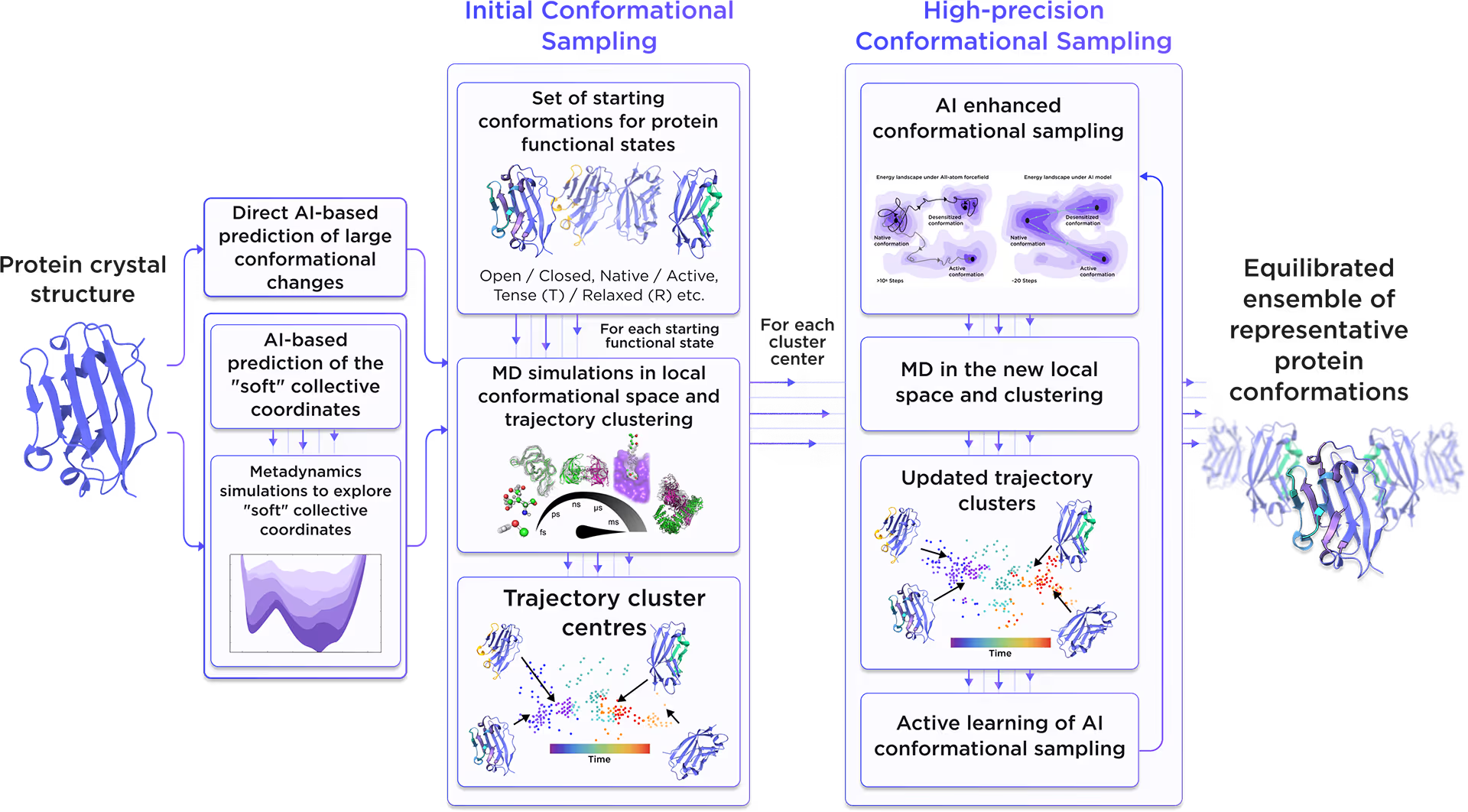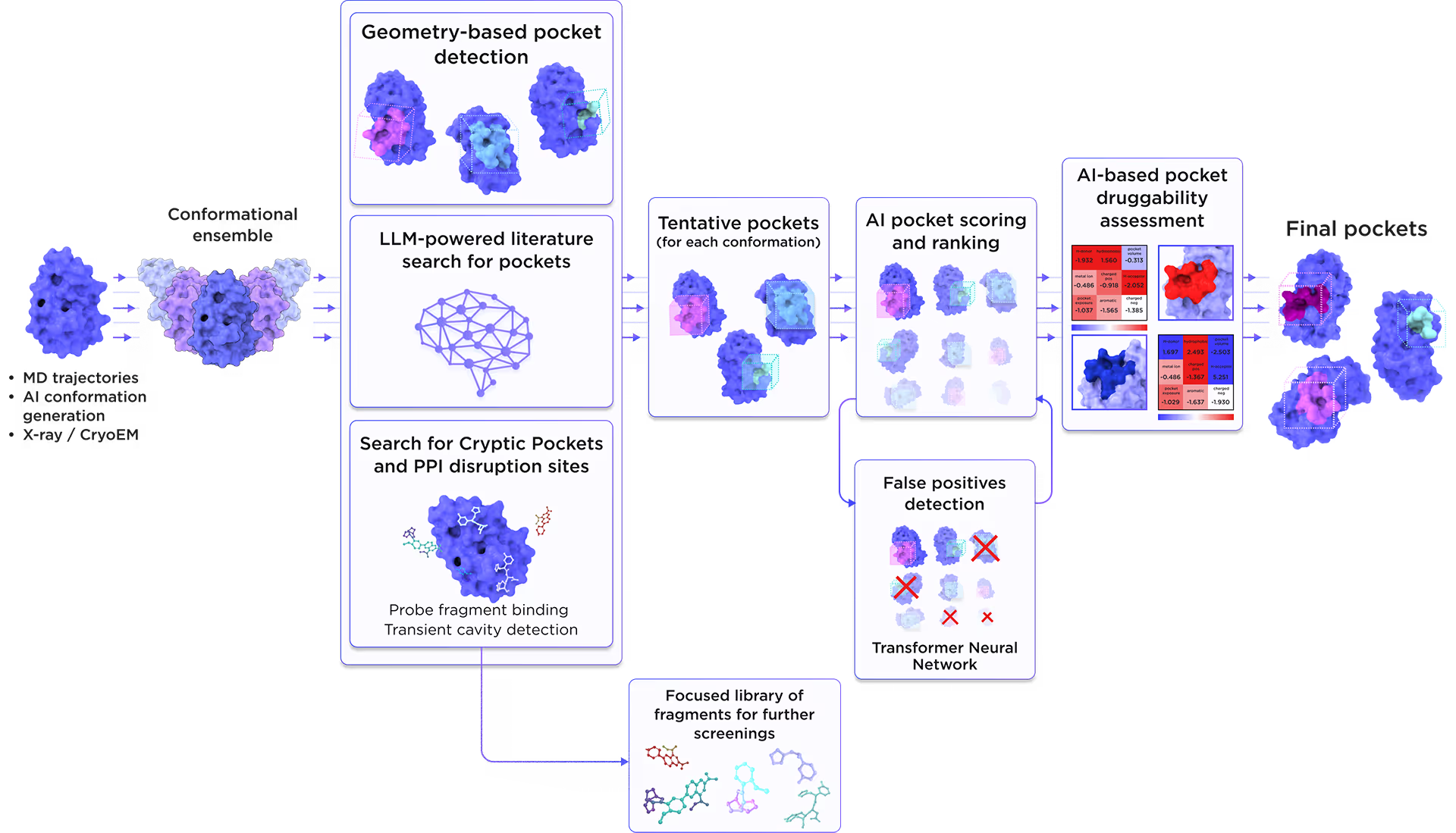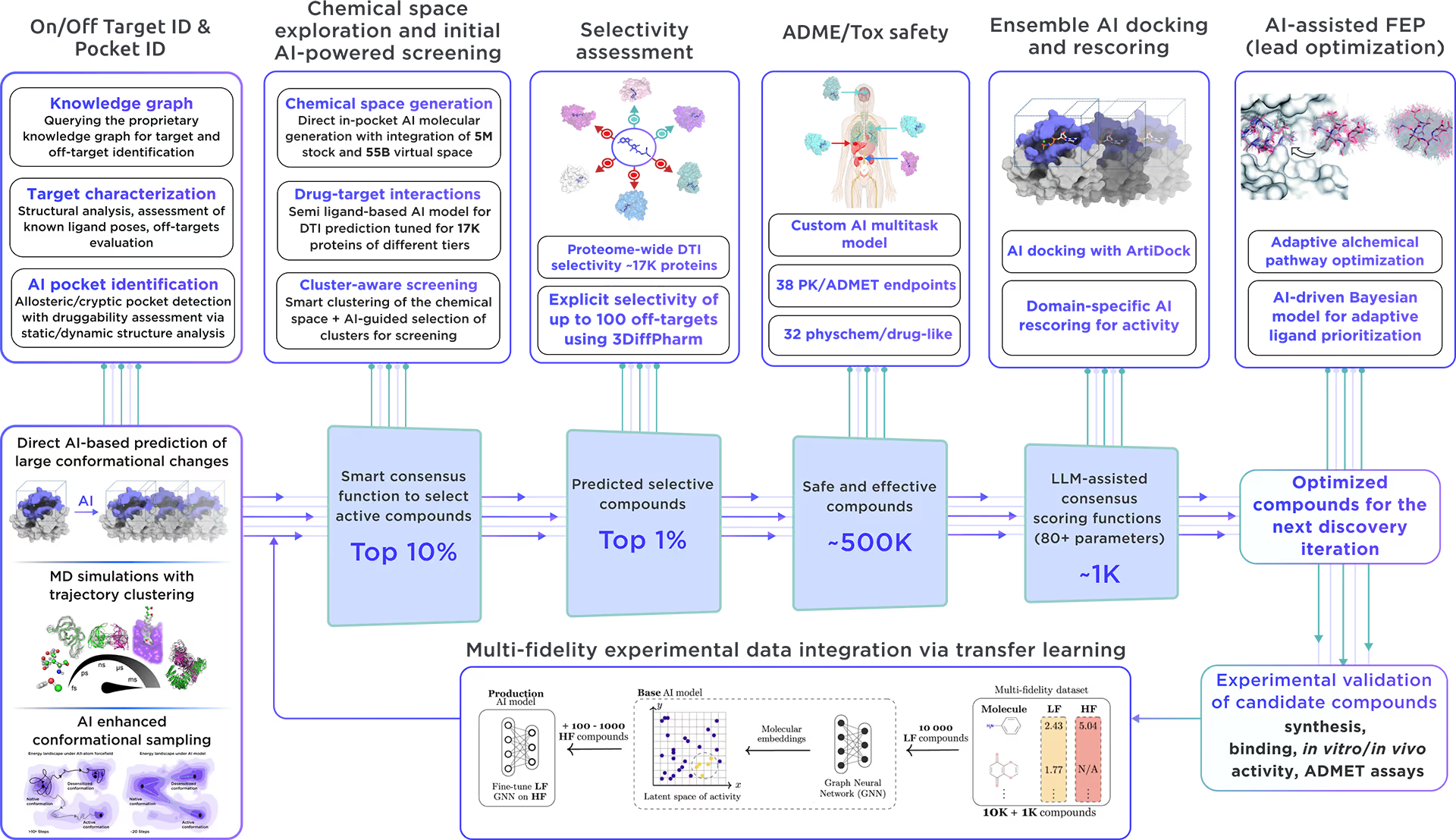

Available from Reaxense
This protein is integrated into the Receptor.AI ecosystem as a prospective target with high therapeutic potential. We performed a comprehensive characterization of Pleckstrin homology domain-containing family M member 1 including:
1. LLM-powered literature research
Our custom-tailored LLM extracted and formalized all relevant information about the protein from a large set of structured and unstructured data sources and stored it in the form of a Knowledge Graph. This comprehensive analysis allowed us to gain insight into Pleckstrin homology domain-containing family M member 1 therapeutic significance, existing small molecule ligands, relevant off-targets, and protein-protein interactions.

Fig. 1. Preliminary target research workflow
2. AI-Driven Conformational Ensemble Generation
Starting from the initial protein structure, we employed advanced AI algorithms to predict alternative functional states of Pleckstrin homology domain-containing family M member 1, including large-scale conformational changes along "soft" collective coordinates. Through molecular simulations with AI-enhanced sampling and trajectory clustering, we explored the broad conformational space of the protein and identified its representative structures. Utilizing diffusion-based AI models and active learning AutoML, we generated a statistically robust ensemble of equilibrium protein conformations that capture the receptor's full dynamic behavior, providing a robust foundation for accurate structure-based drug design.

Fig. 2. AI-powered molecular dynamics simulations workflow
3. Binding pockets identification and characterization
We employed the AI-based pocket prediction module to discover orthosteric, allosteric, hidden, and cryptic binding pockets on the protein’s surface. Our technique integrates the LLM-driven literature search and structure-aware ensemble-based pocket detection algorithm that utilizes previously established protein dynamics. Tentative pockets are then subject to AI scoring and ranking with simultaneous detection of false positives. In the final step, the AI model assesses the druggability of each pocket enabling a comprehensive selection of the most promising pockets for further targeting.

Fig. 3. AI-based binding pocket detection workflow
4. AI-Powered Virtual Screening
Our ecosystem is equipped to perform AI-driven virtual screening on Pleckstrin homology domain-containing family M member 1. With access to a vast chemical space and cutting-edge AI docking algorithms, we can rapidly and reliably predict the most promising, novel, diverse, potent, and safe small molecule ligands of Pleckstrin homology domain-containing family M member 1. This approach allows us to achieve an excellent hit rate and to identify compounds ready for advanced lead discovery and optimization.

Fig. 4. The screening workflow of Receptor.AI
Receptor.AI, in partnership with Reaxense, developed a next-generation technology for on-demand focused library design to enable extensive target exploration.
The focused library for Pleckstrin homology domain-containing family M member 1 includes a list of the most effective modulators, each annotated with 38 ADME-Tox and 32 physicochemical and drug-likeness parameters. Furthermore, each compound is shown with its optimal docking poses, affinity scores, and activity scores, offering a detailed summary.
Pleckstrin homology domain-containing family M member 1
partner:
Reaxense
upacc:
Q9Y4G2
UPID:
PKHM1_HUMAN
Alternative names:
162 kDa adapter protein
Alternative UPACC:
Q9Y4G2; Q6P2R5; Q8TEL9; Q9NPP5; Q9NYA0
Background:
Pleckstrin homology domain-containing family M member 1, also known as the 162 kDa adapter protein, plays a pivotal role in cellular processes by acting as a multivalent adapter protein. It regulates Rab7-dependent and HOPS complex-dependent fusion events in the endolysosomal system, coupling autophagic and endocytic trafficking pathways. This protein is essential for the late stages of endolysosomal maturation, facilitating the degradation of growth factor receptors and autophagosome clearance. Additionally, it supports the integrity of the Salmonella-containing vacuole (SCV) during microbial infections.
Therapeutic significance:
Given its involvement in osteopetrosis, both autosomal recessive and dominant forms, understanding the role of Pleckstrin homology domain-containing family M member 1 could open doors to potential therapeutic strategies. Its function in bone resorption and regulation of endolysosomal maturation highlights its potential as a target for treating bone density disorders.